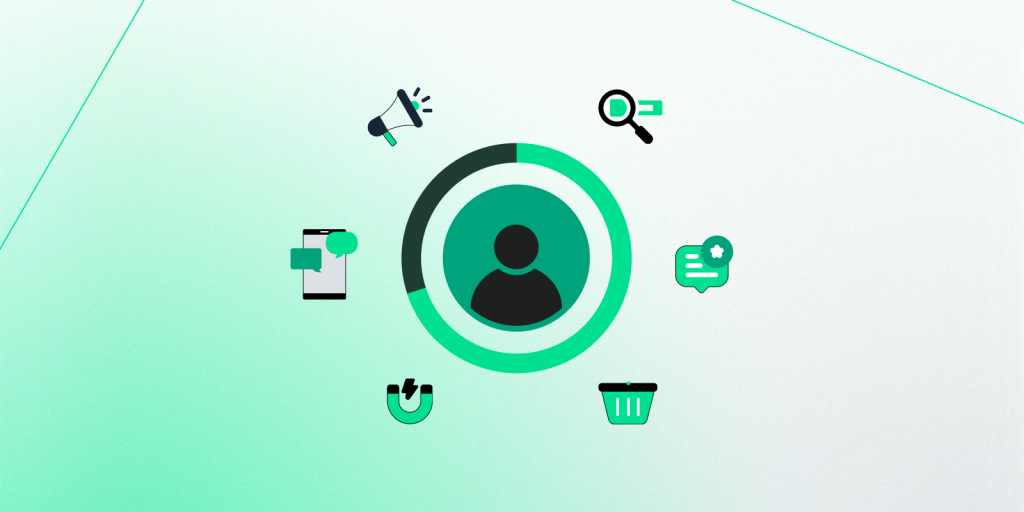Understanding customers is a significant challenge for enterprises that deal with vast amounts of data from various sources. Often, this data remains siloed, preventing businesses from seeing the full picture. A unified customer profile (UCP) addresses this by combining all relevant information into a cohesive view. This approach ensures that every interaction, whether through marketing, sales, or support, is informed by a complete understanding of the customer.
The advantages of implementing a UCP extend across various aspects of business operations. Firstly, it provides enterprises with deep, actionable insights into customer behaviour, enabling personalized marketing strategies that resonate on a more individual level. Additionally, a UCP facilitates improved customer service by equipping support teams with a complete history of the customer’s interactions with the brand, leading to quicker resolution times and more personalized assistance.
Ultimately, businesses can increase customer satisfaction and drive loyalty and growth by fostering a deeper understanding of their customers. Adopting a UCP is not just about better data management—it’s about creating a customer-centric business that thrives through enhanced engagement and experiences.

Simplifying Customer Data Management with SAP CDC
Managing and unifying customer data is a complex challenge enterprises face as they seek to deliver consistent, personalized experiences across multiple channels. SAP Customer Data Cloud (SAP CDC) is a market-leading solution designed to help enterprises efficiently manage and consolidate customer data across all touchpoints.
SAP CDC, part of the SAP Customer Experience suite, focuses on transforming fragmented customer data into a unified, reliable source of truth. The platform offers comprehensive tools for identity management, consent management, and data governance, ensuring that your organization can securely and effectively handle customer data while complying with regulations like GDPR and CCPA.
With SAP CDC, enterprises can:
– Centralize Customer Data
– Manage Customer Consent
– Enhance Identity Management
– Synchronize Data in Real-Time
Best Practices for Building a Unified Customer Profile
To maximize the benefits of SAP CDC and build a comprehensive customer profile, enterprises should follow best practices that focus on efficient data management, compliance, and personalization. These practices will help ensure your customer data is unified and actionable to drive better business outcomes.
1. Centralize Data Collection Across Touchpoints
– Integrate Multiple Sources: The first step is to centralize data from all customer touchpoints. This means integrating your CRM, e-commerce platform, customer support systems, and any other data sources into a single platform. SAP CDC excels here by providing out-of-the-box integrations with popular enterprise systems, making data centralization seamless.
– Omnichannel Consistency: Maintain consistency in data collection by standardizing customer information across channels. SAP CDC’s API-first approach allows seamless integration with various platforms, ensuring consistent data capture.
2. Use Progressive Profiling
– Avoid overwhelming customers by collecting information over time through progressive profiling. Capture essential data at initial interactions and gradually ask for more details as the relationship develops.
3. Leverage Consent Management for Trust and Compliance
– Transparent Data Practices: Use SAP CDC’s consent management tools to ensure that customers are fully aware of how their data will be used. This builds trust and encourages customers to share more information.
– Regulatory Compliance: Maintain compliance with global data privacy regulations like GDPR and CCPA by managing customer consent efficiently.
4. Enrich Profiles with Third-Party Data
– Data Enrichment: Augment customer profiles with additional data from third-party sources or internal systems, such as CRM or ERP.
– Behavioural Data Integration: Incorporate behavioural data, such as browsing history, purchase patterns, and interaction history, into customer profiles. This data provides valuable insights for personalized marketing and engagement.
5. Implement Advanced Segmentation
– Targeted Campaigns: Use the unified customer profiles to segment your audience based on specific attributes, behaviours, or preferences. This enables more precise and personalized marketing campaigns.
– Dynamic Segmentation: Leverage SAP CDC’s capabilities to create dynamic segments that automatically update as customer data changes, ensuring your targeting remains relevant and effective.
6. Ensure Data Security and Privacy
– Robust Security Measures: Protect customer data using advanced security features, including encryption and secure access controls. Enterprises must prioritize data security to build trust and comply with regulations.
– Access Control: Implement fine-grained access controls to ensure that only authorized personnel can view or modify customer profiles.
7. Utilize AI and Machine Learning for Personalization
– AI-Driven Insights: Use AI and machine learning to analyze customer data and derive insights that drive personalized experiences. AI can identify patterns and predict customer behaviour, enabling more targeted engagement.
– Real-Time Personalization: Implement real-time personalization based on updated customer profiles, ensuring that interactions are timely and relevant.
8. Monitor and Optimize Performance
– Analytics and Reporting: Use SAP CDC’s analytics tools to monitor the performance of your unified customer profiles. Track key metrics such as engagement rates, conversion rates, and customer satisfaction.
– Continuous Improvement: Regularly review your data strategies and make adjustments to optimize the effectiveness of your unified customer profiles.
Emphasizing Data Quality
While the volume of data collected is essential, the quality of that data is paramount. Inaccurate or outdated information can lead to misguided strategies and poor customer experiences. Ensuring that data is clean, consistent, and up-to-date is essential. Regular audits and the use of data cleansing tools help maintain data integrity. Additionally, encourage customers to update their information through self-service portals, ensuring profiles remain up-to-date.
How Trew Knowledge and SAP CDC Can Help
At Trew Knowledge, we leverage SAP CDC to build robust custom solutions that drive business success. Our team specializes in seamlessly integrating SAP CDC into your existing systems, ensuring a smooth transition with minimal disruption. We handle every aspect of the implementation process, from initial setup and technical consulting to data migration, customization and ongoing support.
Our data strategy and customer experience expertise ensure you maximize your investment in SAP CDC, turning data into a competitive advantage. Contact us today.

